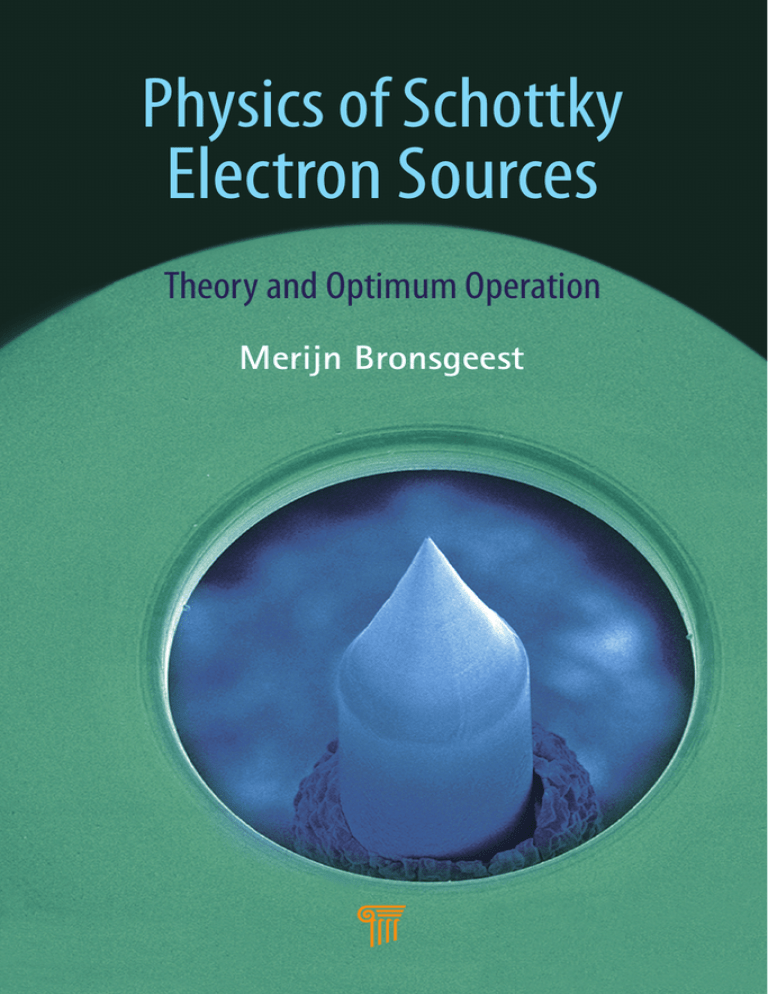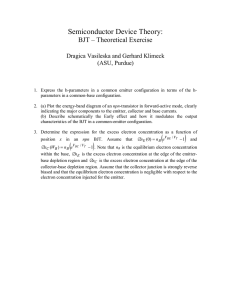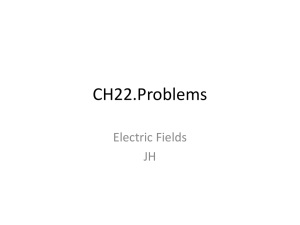
Physics of Schottky
Electron Sources
Theory and Optimum Operation
Merijn Bronsgeest
Physics of Schottky
Electron Sources
Physics of Schottky
Electron Sources
Theory and Optimum Operation
editors
Merijn Bronsgeest
Preben Maegaard
Anna Krenz
Wolfgang Palz
The Rise of Modern Wind Energy
Wind Power
for the World
Published by
Pan Stanford Publishing Pte. Ltd.
Penthouse Level, Suntec Tower 3
8 Temasek Boulevard
Singapore 038988
Email: editorial@panstanford.com
Web: www.panstanford.com
British Library Cataloguing-in-Publication Data
A catalogue record for this book is available from the British Library.
Physics of Schottky Electron Sources:
Theory and Optimum Operation
Copyright © 2014 by Pan Stanford Publishing Pte. Ltd.
All rights reserved. This book, or parts thereof, may not be reproduced in any form
or by any means, electronic or mechanical, including photocopying, recording
or any information storage and retrieval system now known or to be invented,
without written permission from the publisher.
For photocopying of material in this volume, please pay a copying fee through
the Copyright Clearance Center, Inc., 222 Rosewood Drive, Danvers, MA 01923,
USA. In this case permission to photocopy is not required from the publisher.
ISBN 978-981-4364-79-9 (Hardcover)
ISBN 978-981-4364-80-5 (eBook)
Printed in the USA
Contents
Preface
Introduction
ix
1
1. Electron Emission from a Surface
7
1.1
The Potential Energy Barrier at a Surface
7
1.2
Emission by Heating
9
1.3
The Effect of an Electric Field on the Potential
Energy Barrier at a Surface
12
1.4
Emission by Heating and Applying an Electric
Field16
1.4.1 Escape Probability
16
1.4.2 Current Density
22
1.4.3 Energy Distributions
25
2. Emission from a Schottky Emitter
29
2.1
Work Function Variations across the Emitter
Surface30
2.2
Applying a Bias
32
2.3
Applying a Heating Current
38
2.3.1Temperature
38
2.3.2 Tip Protrusion (Field Strength)
42
2.3.3 Surface Properties (Work Function)
44
2.4
Total Emission Current
45
3. Emission from the End Facet
49
3.1
The Facet Extractor Lens
50
3.1.1 At the Facet
50
3.1.2 Lens Properties
52
3.1.3 Behind the Extractor 55
3.1.3.1 The angular intensity of the
source55
3.1.3.2 The full facet emission pattern
57
3.2
The Effect of the Voltage Settings
59
3.2.1 Different Options
59
vi
Contents
3.3
3.4
3.5
3.2.2 The Effect of Changing the Extraction
Voltage 60
3.2.2.1 From the facet toward the
extractor62
The Effect of Emitter Geometry 69
3.3.1 Tip End
69
3.3.2 Tip Size
71
3.3.3 Cone Shape
73
Schottky Plots
75
The Effect of the Heating Current
81
3.5.1 A Temperature-Dependent Work
Function84
3.5.2 The Predicted Effect on the Emission
Pattern89
4. The Final Beam for Applications
95
4.1
Imaged by the Electron-Optical System:
The Virtual Source
96
4.1.1 Imaginary Cold Schottky Source 97
4.1.2 Heated Schottky Source
100
4.2
Current in the Source Image: Practical
Brightness108
4.2.1 The Definition of Practical Brightness
109
4.2.2 How to Get the Practical Brightness
of a Source?
113
4.2.3 The Intrinsic Practical Brightness for
Thermionic, Schottky, and Cold Field
Emission Electron Sources
114
4.3
Total Probe Size: Source Image Plus Diffraction
Plus Aberration Contributions
116
4.4
The Effect of Electron–Electron Interactions
in the Beam
119
4.4.1Simulations
121
4.4.1.1 General equations
122
4.4.1.2 Application to Schottky
emitters125
4.4.1.3 Adding contributions
together130
4.4.2 The Boersch Effect Extracted from
Energy Spread Data
134
Contents
4.5
4.4.2.1 Function to represent the
Boersch effect
134
4.4.2.2 Total energy distribution
measurement135
4.4.2.3 Intrinsic contribution
136
4.4.2.4 Fit results
137
4.4.2.5 Comparison with theory
140
4.4.2.6Discussion
141
Summarizing: The Beam Properties Relevant
to Electron Optical Systems
142
5. Geometrical Stability
147
5.1
Observed Geometrical Changes
147
5.2
Equilibrium Crystal Shapes
151
5.3
Tip Size Growth
156
5.3.1 The Continuum Model: Tip Size
Growth at Low Fields
156
5.3.2 Tip Size Growth at High Fields 162
5.4
Changes of the End Facet Geometry
164
5.4.1 Evidence of the Tip–Emitter Interplay
165
5.4.2 Reversible Changes of the End Facet
168
5.4.2.1 Monitoring with the
emission pattern
168
5.4.2.2 Monitoring with the Schottky
plot slope
176
5.5
Collapsing of the End Facet 177
5.5.1 The Step-Flow Model
178
5.5.1.1 Application to Schottky
emitters182
5.5.1.2Discussion
187
5.5.2 Tip–Emitter Interplay
189
5.5.2.1Experiments
190
5.5.2.2 General system check:
no-collapse operation 192
5.5.2.3 Collapsing analysis
193
5.5.3(A)symmetry
196
5.5.4 Detailed Geometrical Description
201
5.6
The Effect on Beam Properties
208
5.6.1 Facet Size Changes
208
5.6.2 Facet Collapse
210
vii
viii
Contents
5.7
Concluding Remarks
6. Optimum Operation
6.1
Maximum Performance for Different
Applications 6.1.1 Maximum Performance from a Static
Emitter Shape
6.1.2 Geometrical Limitations
6.2
Source-Monitoring Tools
6.2.1 Schottky Plot Slope
6.2.2 Total Emission Current
6.2.3 Facet Emission Pattern
6.3
Practical Considerations
6.3.1 For Users
6.3.2 For System Manufacturers and
Experimental Setups
Appendix A. Procedures for Monitoring in a Few Commercial Systems
211
215
216
216
220
224
225
226
226
227
227
228
231
Appendix B. Procedure to Characterize System Performance
239
Bibliography
243
Index
251
Contents
Preface
The Schottky electron source is the predominant emitter type in
focused electron beam equipment, but although used extensively
and satisfactorily, its properties are not fully understood. New
developments and increasingly more stringent performance
requirements ask for a better understanding: What is the best
possible performance from a Schottky source for a given application?
Which operating parameters are associated with that performance,
and how stable is this “best” performance? These are the questions
addressed in this book.
The content for this book is the result of my work as a PhD
candidate in the research group Charged Particle Optics at Delft
University of Technology in the Netherlands, and it is my pleasure
to acknowledge the interaction with Greg Schwind, Lyn Swanson,
Sean Kellogg, and Alan Bahm of FEI Beamtech in Hillsboro, Oregon,
USA, throughout the years; the technical assistance of Jan de Looff,
Frans Berwald, and Jacques Nonhebel of the research group Charged
Particle Optics in Delft and of Ted Tessner of FEI Company; the
opportunity given to me by Mike Lysaght and Greg Schwind of FEI
Company to work with the sources research team of FEI Company
in Hillsboro in May–July 2006; the courtesy of FEI Company for the
use of some of its scanning electron microscopy (SEM) images in this
book; the contributions to the work on practical brightness by the
late Jim Barth of the research group Charged Particle Optics in Delft;
and the support and guidance of my doctoral advisor Pieter Kruit,
without whom this book would not exist.
Merijn Bronsgeest
ix
Introduction
Electron beams are used for many applications. The most wellknown example is probably the old-fashioned cathode ray tube
(CRT) television, which changed our daily life. And an important
step for science and technology was the invention of the electron
microscope. Today’s focused electron beam equipment uses electron
beams mainly for imaging purposes, elemental characterization, and
writing.
With respect to imaging or chemical analysis, electron irradiation
of a sample produces a wealth of different signals for detection, each
with specific information on the sample, for example:
• elastically back-scattered electrons;
• secondary electrons (ejected from the sample by inelastic
scattering interactions with the beam electrons);
• Auger electrons (a beam electron removes an electron from
the core of an atom, leaving a vacancy, an electron from a
higher energy level falls into the vacancy, and the energy that
is released is transferred to another electron, which is ejected
from the atom with a characteristic kinetic energy);
• characteristic X-rays (a beam electron removes an electron
from the core of an atom, leaving a vacancy, an electron from a
higher energy level falls into the vacancy, and the energy that
is released is transferred to a photon);
• light (a beam electron promotes an electron from the valence
band to the conduction band (semiconductor sample), leaving
a hole, and the electron recombines with a hole and emits a
photon); and
• whether the sample is thin enough: transmitted electrons,
which can be analyzed on changes in amplitude, phase, and/
or energy with respect to the primary beam.
2
Introduction
“Writing” with electrons is used, for example, to:
• locally functionalize a surface;
• create a charge pattern on the surface (for nanoxerography);
• locally expose a so-called “resist” layer on the surface
(maskless lithography); and
• selectively deposit (part of) a precursor gas (electron beam–
induced deposition [EBID]) (resistless nanolithography).
Crucial to any application is the electron source. The predominant
emitter type in today’s focused electron beam equipment, and the
topic of this book, is the so-called Zr/O/W{100} Schottky electron
source.
Schottky electron sources are used in many different systems of
different companies (e.g., FEI Company*, Jeol Ltd., Hitachi Ltd., Carl
Zeiss, KLA-Tencor Corporation, Tescan s.r.o., Phi [Physical Electronics
Inc.], RIBER, Applied Materials). To name a few examples: the Titan
(scanning) transmission electron microscope (FEI Company), the
Nova NanoSEM scanning electron microscope (FEI Company), the
JBX-6300FS Electron Beam Lithography System (Jeol), the SU-70
scanning electron microscope (Hitachi), the JXA-8500F Electron
Probe Micro Analyzer (Jeol), the Mira II CS scanning electron
microscope (Tecsan), the PHI 700 Scanning Auger Nanoprobe
(Physical Electronics), and the microscopes with the Gemini column
(Carl Zeiss).
Each of the applications puts its own specific demands on the
properties of the irradiation. To give two examples, in electron
energy loss spectroscopy (EELS) material-specific information
is obtained by measuring the loss in energy of the primary beam
electron upon transmission through the sample, and the primary
beam electrons thus preferably all have exactly the same energy,
while for high-resolution imaging it is desirable to be able to focus
the electron beam down to a very small spot on the sample with still
enough primary electrons in it to generate a detectable signal within
a reasonable amount of time. The latter requires a high reduced
brightness of the beam.
Over the past decades the Schottky source has been used as
an electron emitter extensively and satisfactorily. Its properties,
however, are not fully understood, and the ongoing quest for ever
*FEI Beam Technology Division, 5350 NE Dawson Creek Dr., Hillsboro, OR 97124, USA.
Introduction
higher resolution and throughput, in combination with the advances
made in the quality of electron optical systems (e.g., aberration
correctors), put an increasing demand on the performance of the
source with respect to, for example, brightness, energy spread, and
geometrical stability. Examples are the recent interest in multibeam
and multisource systems (Zhang & Kruit, 2007; Dokania et al., 2008),
the TEAM project (Dahmen et al., 2009), and the MagellanTM (Young,
2009).
Such developments require better knowledge of the relation
between the operating parameters of the source and the properties
of the beam at the sample, and the stability of the physical shape of
the emitter. These are the topics addressed in this book.
The Schottky source is typically operated in a vacuum
environment of ~10–9 mbar, and the electron emission is generated
by heating the source and applying an electric field to it. Figure i.1
gives images of the Schottky emitter at different length scales.
Figure i.1
Schottky emitters at different length scales.
The emitter consists of a single-crystalline tungsten wire, about
1 mm long and 125 mm in diameter. One end of the wire is etched
down to a tip with a diameter of about 1 mm. Halfway along the
wire a reservoir of ZrOx is attached, and at the other end the wire is
spot-welded to a polycrystalline tungsten loop. This loop is fixed to
two poles, which are embedded in a cylindrical ceramic base 1 cm
in diameter. By running 2.0–2.5 A of current through the loop the
emitter is heated through resistive heating and thermal conduction.
3
4
Introduction
At a standard operating temperature of 1,800 K the emitter and part
of the tungsten loop are glowing brightly.
The electric field is applied by biasing the emitter negatively
with respect to an extractor: a metallic plate or cone, with a central
aperture, usually at about 0.5 mm distance from the emitter tip.
The potential difference between the emitter and the extractor is
typically a few kilovolts. In the standard configuration the emitter is
operated with an extractor and a suppressor.
The suppressor is a metal cap with a small hole. The emitter
protrudes from the suppressor cap through the aperture for about
0.25 mm. It can be seen just peeking out from the cap in Fig. i.2. In
operation the suppressor is biased negatively with respect to the
emitter up to a few hundred volts to suppress unwanted electron
emission from the part of the emitter that is inside the cap.
Figure i.2
Schottky emitter with and without a suppressor cap.
Two examples of a suppressor-emitter-extractor module are
shown in Fig. i.3.
Characteristic for the Schottky emitter is the low work function
of the planes with the {100} orientation. This is caused by the
presence of zirconium and oxygen on the surface, which reduces the
work function of the {100} planes considerably with respect to other
crystallographic orientations. Zirconium and oxygen are present
in the reservoir on the base of the emitter, and at a high operating
temperature they can reach the {100} planes through diffusion.
Introduction
The most important {100} plane is the facet on the tip end
(Fig. i.1). This facet delivers the electrons that will end up in the final
beam for applications. Most of the emission from a Schottky source
is not used: the total emission from a Schottky emitter is typically up
to a few hundred microamperes. The emission from the end facet is
typically a few tens of microamperes. The beam current that is used
in applications is cut out from the facet beam and typically contains
of the order of a few picoamperes up to maybe microamperes.
Figure i.3
Examples of integrated source-suppressor-extractor modules
(left: YPS AES-170 module; right: Denka TFE module).
The Schottky source has been studied by several investigators.
In total about 50 articles have been published. Swanson et al. have
done a great deal of the pioneering work from the late sixties to
the mideighties in the area of Portland, Oregon. This area is still a
location of active research: it is where FEI Company has concentrated
its emitter research and development efforts. FEI Company is one of
the few manufacturers of Schottky emitters (others are Denka and
York Probe Sources Ltd.).
The first patent on the Schottky source was filed in 1964 as a
result of the research in Oregon. Since then, about 15 US patents
have been awarded, mainly to FEI Company (Oregon), Hitachi Ltd.
(Tokyo), and Denka (Tokyo), although three early patents are from
Wolfe, who worked for General Electric Company (New York) and
Burroughs Corporation (Detroit).
During the work for this book there have been many discussions
with FEI Company.
5
6
Introduction
The structure of this book is as follows: in the first part of this
book beam properties are addressed. Chapter 1 gives the electron
emission theory that is used throughout this book to quantify the
properties of emission from a surface. Chapter 2 addresses how the
input parameters for emission theory relate to the practical case of
a Schottky emitter in operation. In Chapter 3 we zoom in onto the
emission from the end facet and how that arrives at the extractor,
and in Chapter 4 we make the connection between facet emission
and the final beam properties relevant to applications.
The second part, Chapter 5, is dedicated to the geometrical
stability of the shape and consequences for the properties of the
beam.
Finally, in the last part, Chapter 6, the focus is on achieving and
maintaining maximum performance from the source for different
applications.
The Schottky effect, the lowering of the potential barrier at the
surface by applying a field to it, plays an important role in the emission
properties of the Schottky electron source (Fig. i.4).
Figure i.4
Walter Hermann Schottky (1886–1976).



